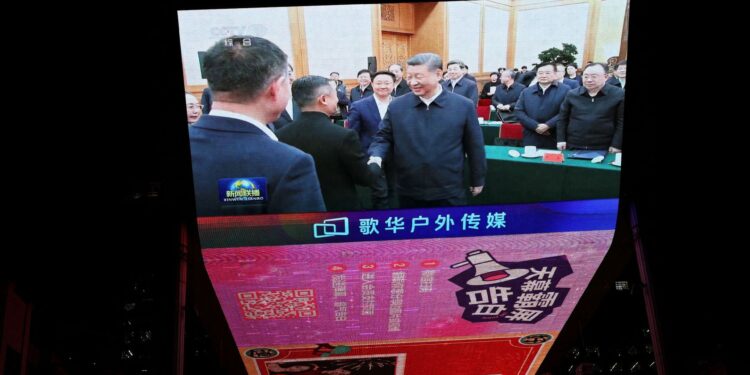The Economist newspaper said that China is witnessing a noticeable shift in its dealings with entrepreneurs in the technology sector, after years of organizational restrictions that have harmful to major companies such as Ali Baba and Tinsight.
The newspaper considered that the return of Jack Ma, the founder of Ali Baba, to the forefront through his participation in an economic seminar headed by Chinese leader Xi Jinping in Beijing on February 17, represented an economic rehabilitation that may be the most profitable in history.
Standard heights in stock markets
According to the report, Ali Baba’s shares increased by 6.2% after the spread of information about the participation of Jack Ma in the symposium, which added 18 billion dollars to the company’s market value.
The shares of the Giant Technology Company “Tinten” and the Xiaom Electronics Company “Xiaomi” increased by 7%, in light of a general recovery in the Chinese technology sector, where the “Hang Singh Tech” index, which includes the 30 largest technology companies listed on the Hong Kong Stock Exchange, jumped, By 23% during the past month, while Ali Baba’s shares increased by more than 50% since the beginning of the year.
The main reason behind this height, according to “Economist”, is the “Deep Cick” company that specializes in artificial intelligence, which has managed to make great progress. Analysts from Bank of America compared this development to the introduction of Ali Baba for the public subscription on the New York Stock Exchange in 2014, which led to the prosperity of consumer internet companies.
Transformations in Chinese policies
After the Chinese government tightened in 2020, which led to the abolition of the initial offering of the company “Ant Group”, which is affiliated with what, and imposing a record fine on Ali Baba, the Chinese government has now begun to take a more reconciliation approach with the private sector.
According to sources familiar with the meeting, Shi Jinping stressed during the symposium on “the importance of the private sector in pushing the Chinese economy,” acknowledging the challenges it faces.
These statements come amid a slight improvement in the China business confidence index, according to a monthly survey of more than 300 executives in major companies. However, many economic indicators, such as corporate financing and inventory levels, are still suffering from a clear contraction.
While some see that Jack’s return is what is a victory for the private sector, others indicate that it is an affirmation of the tightening of the Communist Party’s control of businessmen, since the campaign that started 5 years ago, entrepreneurs have become more complied with the party’s policies, and they have to play according to the rules of Xi Jinping Or face the consequences.
Future challenges
Despite the recent positive transformations, the business environment in China is still facing several obstacles, as there are strict restrictions on public proposals abroad, as startups such as “Shen” are obligated to obtain unofficial approval from Chinese regulatory authorities, for reasons related to national security, as they interfered Regulatory authorities to prevent some companies on the Hong Kong Exchange because of their low assessments.
Besides, the Chinese financial system has become a mixture between the public and private sectors, as government investments have become dominating the risk capital funds and private shares, which complicates traditional financing mechanisms.
According to the report, this approach may hinder innovation, as companies are forced to adapt to government priorities instead of focusing on the needs of the market and consumers.
Possible transformations
Although the rehabilitation of Jack what may seem a positive initiative, it reflects a strategic shift in how China deals with the private sector, according to the newspaper. Instead of allowing companies to grow freely, the government is working to redirect in line with its economic policies.
Consequently, the most important question remains: Does this shift represent the beginning of a new era of stability for the Chinese technology sector, or is it just a temporary attempt to revive the markets without fundamental change in organizational policies?



